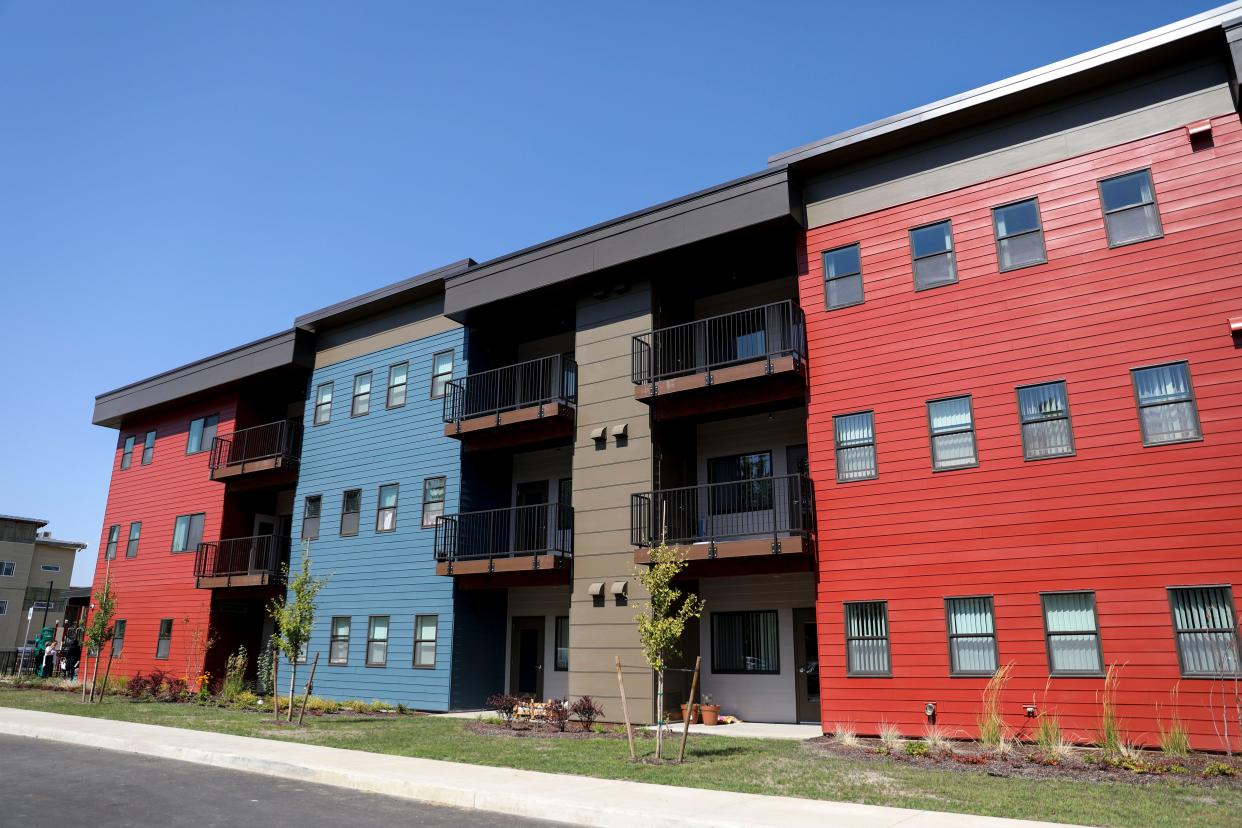A tax credit is supposed to help Oregon farmers house their workers. Does it?

Oregon lawmakers are being asked to decide whether to extend a tax credit designed to help incentivize the development of agricultural workforce housing, allowing housing developers to claim credit for projects completed before January 2030.
Outside the capitol, advocates and providers of agricultural workforce housing disagree on a fundamental premise: whether the tax credit even works.
Agricultural employers who provide housing say the credit does not work for them because it requires up-front capital many farms don't have.
Community-based housing developers say it works just fine.
The Statesman Journal looked into the program to understand how it works.
What is the agricultural workforce housing tax credit?
Lawmakers created the agricultural workforce housing credit in 1989 to help offset the cost of building housing for agricultural workers.
The credit can be applied to corporate or personal income taxes to help pay for construction, rehabilitation, or acquisition of agricultural workforce housing in Oregon, according to the Department of Revenue, and can cover up to 50% of eligible project costs.
Credits are administered once the project is complete.
The program is administered by Oregon Housing and Community Services. In 2021, the Legislature voted to increase the amount of credits available per biennium from $7.25 million to $16.75 million.
Who is eligible for agricultural workforce housing credits?
Any person, employer or organization who builds or rehabilitates housing for agricultural workers is eligible to apply for the credit. Stipulations include: occupancy of the units is exclusively for agricultural workers and their families for 10 years, and OHCS monitors compliance through an annual certification process.
The units do not have to be occupied year-round so agricultural employers can build housing for migrant or seasonal employees. They cannot be occupied by anyone other than agricultural workers at any time. Residents do not have to work in agriculture all year, but they must work in agriculture for at least part of the year.
Agricultural workers, in this case, do not include direct relatives of farm operators who work for the farm.
How have the agricultural workforce housing credits been used?
OHDC divides project applications into two buckets: one for on-farm housing, one for community-based housing.
On-farm housing is typically employer-provided housing on or adjacent to an agricultural operation. Community-based housing includes projects such as Colonia Paz, an apartment complex in Lebanon built specifically for farmworkers. Farmworker Housing Development Corporation (FHDC), the project’s principal developer, claimed $3.1 million in tax credits to help fund the project in 2019, according to OHCS records.

The funds are not evenly distributed. Eighty percent of the available tax credits are allocated to community-based housing. Twenty percent, or $1.67 million, is set aside for on-farm housing because on-farm housing projects generally cost less, said Martin Jarvis, state tax credits program analyst for OHCS’s affordable rental housing division.
“We fund more on-farm projects, but the dollar amount is lower,” Jarvis said.
On-farm housing developers claim an average of $125,000 in tax credits, according to OHCS data. The highest amount claimed by an on-farm housing provider was $625,000 by a cherry orchard in 2017 for four units of housing.
Community-based projects, meanwhile, have claimed up to $3.5 million in credits. It makes sense, Jarvis said: community-based housing projects like Colonia Paz cost more to build and offer more to residents than on-farm housing units. It costs more to build 24 apartments with amenities than it does to build a bunkhouse or buy “manufactured dwelling unit,” or mobile homes.
Community housing providers, in turn, face a more rigorous application process, Jarvis said. Applicants must identify other funding sources and provide greater detail about the scope of their project.
Does the agricultural workforce housing credit legislation work?
The tax credit is one component of the state’s efforts to provide more farmworker housing, Jarvis said. And if the state’s goal is to ultimately decrease reliance on on-farm housing and bolster farmworkers’ abilities to settle down in their communities, the credit is “the tool we have” to do that.
“[OHCS] always has in mind, while there will always be a need for on-farm housing and that housing should be safe, well cared for, healthy,” Jarvis said, “we do think it’s more important to consider how we’re building communities.”
Community housing providers agree.
“The farmworker tax credit is working quite well for community-based and on-farm housing,” said Peter Hainley, executive director of CASA Oregon, a nonprofit that helps fund and build affordable housing, including community-based housing for farmworkers.
But agricultural employees and representatives are not as convinced.
“Farm economics will tell you: [farmers] are land rich but cash poor,” Jeff Stone, president of Oregon Association of Nurseries, said at a recent Agricultural Workforce Housing Facilitation Team meeting hosted by OHCS.
And, Stone said, “credits really only work if you show a profit.”
Stone said he and other grower advocates want to see a model that provides more financial assistance on the front-end, like a grant.
Developers and housing providers bear the up-front expenses and construction costs. It's not helpful to get a tax credit on money you’ve already spent, if you don’t have that money to spend in the first place, he said.
“If you want to have housing as an outcome, how do you get it past step one to actually building it?” Stone said.
Hainley isn’t convinced. He thinks the legislation is working and has yet to see evidence that it isn’t.
“You guys have financed thousands of units using farmworker tax credits,” he said at the January facilitation team meeting. “It’s really incumbent upon us to celebrate the work that’s been accomplished.”
The tax credit program has caveats built in to help account for up-front costs. Credits can be sold, or transferred, to other parties who contribute to construction costs.
That’s how many community-based providers do it, Jarvis said: they find an investor, or a bank, who’s willing to buy the tax credit upfront. Once the credit is issued, recipients can transfer it as long as they file a joint form with the department of revenue.
“It’s a way of getting money up-front,” Jarvis said.
The transfer is “supposed to be easy,” he said, but he understands how it could add an extra burden to farmers who are already stretched thin.
What will happen with the agricultural workforce housing credit this year?
The tax credit program will face the legislature for another round of approval this year, and its structure could change.
OHCS is exploring creating a grant program specifically for on-farm housing and using the tax credit exclusively for community-based housing projects. The agricultural housing tax force, commissioned by former Gov. Kate Brown, also recommended a $5 million tax program to maintain already-existing on-farm housing.
The grant program is still just an idea. Jarvis said he hopes it will gain traction and be endorsed.
Stone said he is waiting to learn more about Gov. Tina Kotek's vision for agricultural housing before making any detailed proposals. Kotek has vowed to make housing a priority and declared a homeless emergency her first day in office.
"There are a lot of choices," he said. "We want to give [Kotek] every opportunity to frame this debate in ways she sees best."
Shannon Sollitt covers agricultural workers through Report for America, a program that aims to support local journalism and democracy by reporting on under-covered issues and communities. Send tips, questions and comments to ssollitt@statesmanjournal.com
This article originally appeared on Salem Statesman Journal: Oregon agricultural workforce housing tax credit, explained

